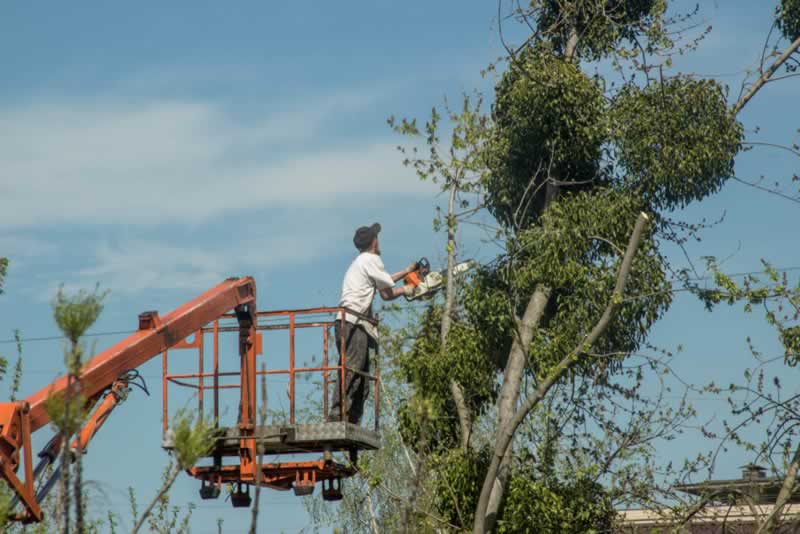How To Outsmart Your Boss On Tree Removalist
Cherries bloom in late wintertime or very early springtime.
Relevant Articles
Dogwoods & Black Stem Condition
Frogeye Leaf Place on Apple Trees
Fire Curse on a Plum Tree
Assist for Infected Pine Trees
Just How to Recognize Peach Tree Issues

A member of the rose household, Japanese crying cherry trees (Prunus subhirtella pendula) are amongst the first to flower in springtime, blanketing their branches with delicate pink blooms prior to the leaves begin to unfurl. Best in U.S. Division of Farming plant hardiness areas 5 via 8, weeping cherries choose damp, well-drained, loamy soil and also complete sunlight to small color. The trees expand 15 to 25 feet tall and also broad. Although crying cherry is an ornamental tree, it is prone to the exact same conditions as fruiting cherries.
Cankers
Cytospora cankers are a fungal infection that causes brand-new development, including leaves, to yellow, as well as gummy lesions to establish on the bark. Lesions might exude sap. Timber underneath the cankers passes away, and also the tree might shed its leaves. Spores take a trip via wind as well as spilling water, getting in the tree via wounds triggered https://lowcuttreeservices.blogspot.com/ by trimming, lawn mower strikes or insect task. Mild temperature levels and damp weather condition advertise the spread of infection.
Stay clear of harming the weeping cherry tree with gardening devices. Screen the tree for insects as well as use chemicals when essential to safeguard the tree. Prune contaminated areas of the tree in winter months, when spores are inactive.
Black Knot
Another fungi, Dibotryon morbosum, causes black knot disease. The infection normally arises in spring, creating yellow-colored, corky swellings in the infected bark of branches and also branches. The growths ultimately transform black and hard. The disease prevents the circulation of nutrients and also dampness to the twigs and branches. Some branches might pass away. Prune away infected branches in winter, when the microorganism is inactive. Sterilize tools between cuts. Seek out and remove any kind of wild cherry or plum trees in the location, as the fungus can conceal there as well as infected your tree. Utilize a safety fungicide in very early springtime, at bud break. Look for fungicides labeled as appropriate for black knot and ideal for ornamental cherry trees, and comply with label instructions.
Fire Blight
Erwinia amylovora, a germs, triggers blossom affliction, dieback as well as in serious situations, death. Search for watery, dark environment-friendly areas on vegetation, flowers as well as branches. As the condition progresses, leaves as well as twigs might turn black as well as shriveled, as if blistered by fire. Erwinia gets in the weeping cherry through wounds and all-natural openings. Cankers typically develop on stems, and also if the cankers girdle branches or arm or legs, they will die. Using disinfected tools, removed infected locations a minimum of 10 inches below the borders of the infection. Cut at least 1 inch of healthy and balanced timber along with cankers. Stay clear of trimming in spring, when the bacteria are proactively moving. Gather and ruin plant particles around the tree.

Examine the location around your backyard for old fruit trees such as pear as well as quince. These may nurture the infection, so eliminate them. Reduce the spread of infection with a spray of streptomycin or Bordeaux combination while the tree is blooming. Comply with all manufacturer's instructions.
Powdery Mold
If your cherry tree's foliage looks as if it's been dusted with baby powder, the tree may have contracted grainy mold illness. This condition is caused by a range of fungi and can establish on the vegetation and flowers. New development may come in stunted or deformed, and contaminated leaves may drop prematurely. Prune the crying cherry to get rid of contaminated areas and also to boost air blood circulation and also sunlight infiltration to help it resist infection. Maintain the area around the tree devoid of plant debris where fungal spores might prowl. Prevent overhanging watering and utilize a protective fungicide prior to rains. Search for sulfur or copper-based fungicides, or products having mancozeb or maneb.
